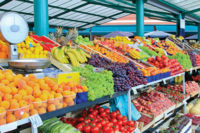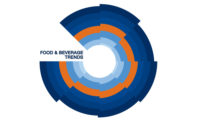Pasta has long been at the heart of Italian cooking, but now it seems that Italian consumers are falling out of love with this traditional dish. New research from Mintel reveals that sales of pasta in Italy had a compound annual growth rate (CAGR) of -2% between 2011 and 2015, with sales falling to 908,100 tonnes in 2016. It appears that health is the reason this national cuisine has fallen on hard times as, today, almost one quarter (23%) of Italians say they are limiting the amount of pasta in their diet for health reasons.
While Italians still consume the biggest volume of pasta per person globally, they are cutting back on this traditional staple. Mintel research finds that retail per capita consumption of pasta in Italy fell from 17.0 kg in 2011 to 15.2 kg in 2016. It seems their tastes are also changing. In 2015, just seven% of Italians said they consumed any gluten-free pasta, while 13% ate organic pasta and 36% ate whole wheat pasta. By 2016, one in three (33%) Italians said they had eaten gluten-free pasta, while 63% had used/eaten organic pasta. Meanwhile, 75% of Italians report eating/using whole wheat or whole grain pasta in 2016, with 30% doing so once a week or more.
Although Italians are turning their backs on tagliatelle, pappardelle and fettuccine, according to Mintel research they remain in the top three pasta eating nations. In 2016, only the Brazilians (1,223,500 tonnes) and Russians (1,184,900 tonnes) consumed more.
“Health concerns over carbohydrate intake continue to plague sales of pasta, especially in Italy where retail sales have been in constant decline every year since 2009. The rising popularity of protein and the resurgence of low carb diets have made for a challenging environment for pasta, which is being shunned in favor of foods perceived to be healthier or more supportive of weight management efforts. New product development centered on positive nutrition and tapping into the ongoing interest in gluten-free food will help to polish pasta’s image,” said Jodie Minotto, Global Food and Drink Analyst at Mintel.
However, it’s not just in Italy that consumers are curbing their appetite for pasta. Across the globe, ‘carbophobia’ is impacting sales. According to Mintel research, the CAGR for pasta between 2011 and 2015 was completely flat in the US, Canada, France and Australia, and down -2% in the UK.
Along with sales, consumption of pasta in the US has also stalled. Average US pasta consumption at retail in 2017 is forecast to reach 2.7 kg, down from 2.8 kg in 2015, while rice consumption is expected to increase to 2.5 kg in 2017 from just 2.3 kg in 2015. Health concerns are at play here, as well, as 41% of US consumers perceive rice and grains to be healthier than pasta. With nearly one third (32%) of consumers, or someone in their household, eating gluten-free foods, it appears that rice is benefitting from its gluten-free status as the CAGR for rice in the US between 2011 and 2015 was two%, according to Mintel research.
Canadians are also looking for healthier alternatives. One in five (21%) Canadian consumers say carbs are a concern when eating pasta, noodles or rice and more than one quarter (26%) are interested in gluten-free pasta, rice or noodles.
While hunger for pasta may be waning, brands are innovating to appeal to consumers’ shifting appetites. Research from Mintel Global New Products Database (GNPD) reveals that one in seven (14%) pasta products launched globally in 2016 were gluten-free, up from just five% of those launched in 2012. What’s more, 18% were organic, up from 11% in 2012, and eight% were whole grain, up from five% launched in 2012.
“The trend for gluten-free and low carb diets and the vilification of wheat as a contributor to a variety of ailments, including weight gain, have contributed to the flat and declining sales of pasta in many key markets. As a result, the pasta category is vastly different to what it was even five years ago. Wheat-free, gluten-free and better-for-you options are now part of the standard pasta range. Consumer demand for natural, unprocessed foods has contributed to the rise in popularity of organic pasta, yet another option pasta brands now need to offer,” concluded Minotto.





